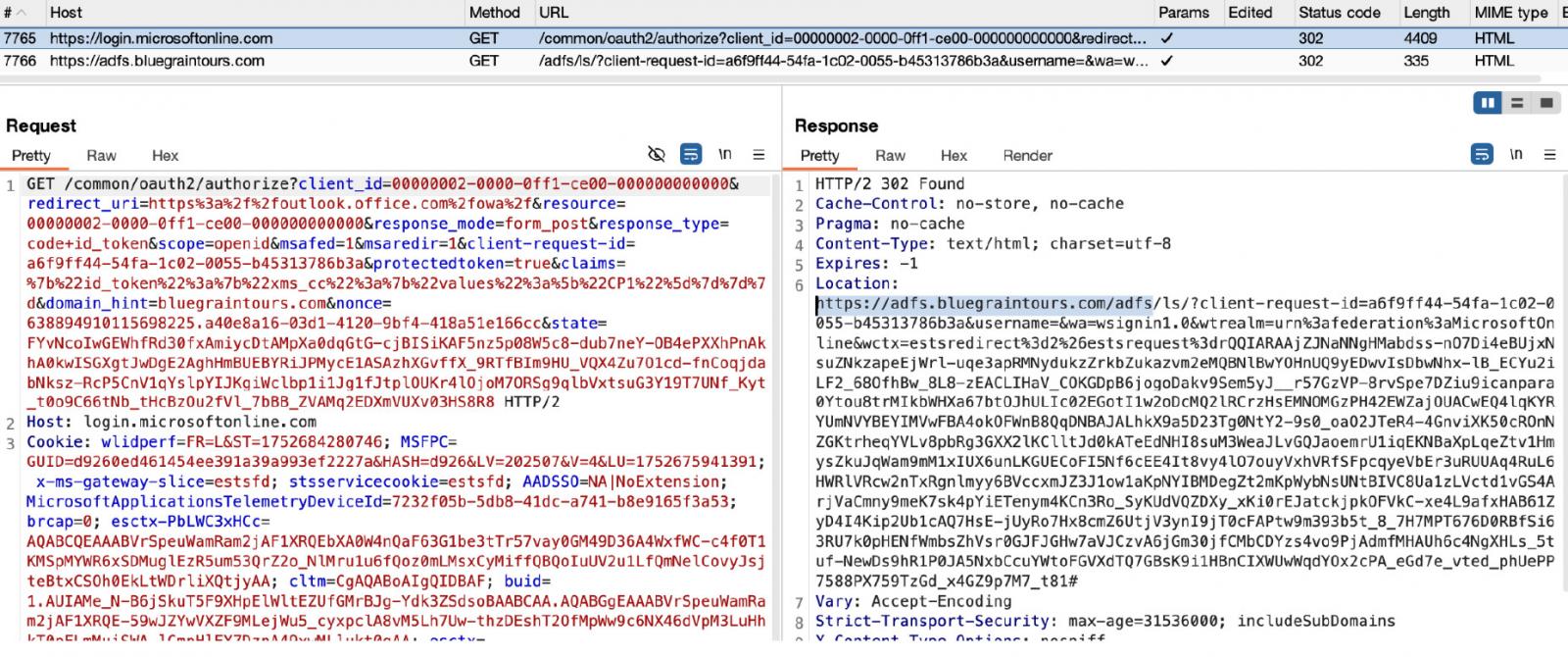Hackers use new methods that mix respectable issues Workplace.com Hyperlinks with Lively Listing Federation Companies (ADFS) to redirect customers to phishing pages that steal Microsoft 365 logins.
This manner, attackers can bypass the multi-factor authentication course of by leveraging conventional URL-based detection and trusted domains on Microsoft’s infrastructure for preliminary redirection.
Dependable redirect legitimacy
Researchers at Push Safety, an organization that gives safety options in opposition to identity-based assaults, have analyzed current campaigns focusing on clients and workers redirected from respectable Outlook.workplace.com hyperlinks.
The phishing web page confirmed no specific elements that prevented it from being detected, however the supply methodology utilized a dependable infrastructure to keep away from triggering safety brokers.
Push Safety began when the phishing assault began when the goal clicks on a malicious sponsored hyperlink in Google search outcomes for Workplace 265 (in all probability a typo).
In case you click on on a malicious consequence, the goal will probably be pointed to the Microsoft workplace and redirected to a different area. bluegraintours (.)comwas additional redirected to the phishing web page set as much as gather {qualifications}.
At first look, reaching a malicious web page appeared to have occurred as a Microsoft redirect Workplace.com Domains that don’t contain phishing emails.
When investigating the incident, Push Safety Researchers found that “the attacker has arrange a customized Microsoft tenant that has configured Lively Listing Federation Companies (ADFS).”
ADFS is Microsoft’s single sign-on (SSO) answer that enables customers to entry a number of purposes, each inside and outdoors the company community, utilizing a single set of login credentials.
The service continues to be obtainable on Home windows Server 2025 and there’s no official plan to criticize it, however Microsoft is encouraging you emigrate to Azure Lively Listing (Azure AD) for Id and Entry Administration (IAM).
By controlling the Microsoft tenant, the attacker makes use of ADF to bluegraintoours Domains performing as IAM suppliers enable authentication on their phishing pages.

Supply: Push Safety
that is why bluegraintoours The location shouldn’t be seen to the goal throughout the redirect chain. The attacker crammed it with pretend weblog posts and detailed sufficient to make it look authorized to automated scanners.
Additional evaluation of the assault revealed that menace actors applied conditional load limits that enable solely targets which can be thought of legitimate to entry the phishing web page.
If the person doesn’t meet the factors, they are going to be routinely redirected to the respectable ones Workplace.com The location, researchers say.
Jacques Louw, co-founder and chief product officer of Push Safety, informed BleepingComputer that these assaults don’t seem to focus on particular business or employment roles, and might be the results of menace actors experimenting with new assault strategies.
“From what we noticed, this appears like a gaggle experimenting with new methods. We have had customers click on on extremely reliable hyperlinks to fairly normal phishing kits, and we have seen teams like Spociny Hunters and Sprcisted Spider,” a co-founder of Push Safety, CPO.
Microsoft ADFS has been utilized in phishing campaigns earlier than, however attackers spoofed the ADFS login web page of focused organizations to steal credentials.
To guard in opposition to such a assault, Push Safety recommends a set of measures, together with monitoring ADFS redirect monitoring in malicious areas.
The investigated assault began with Malvertising, so researchers advise firms to test the AD parameters of Google Redirect Workplace.comthis might reveal a malicious area or be redirected to a phishing web page.









